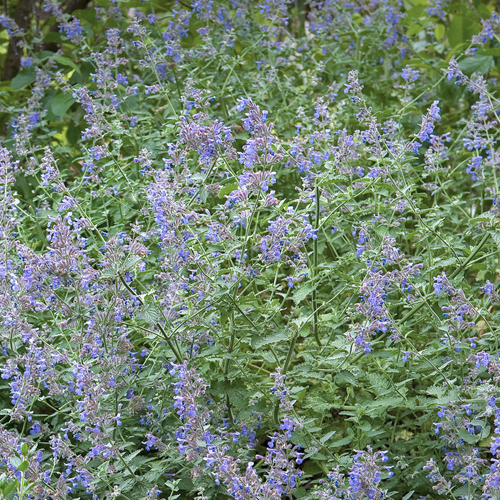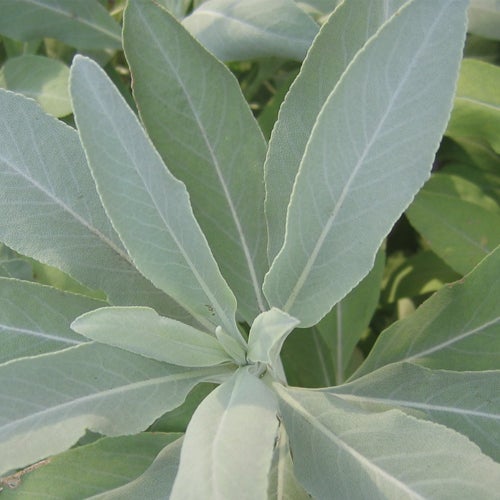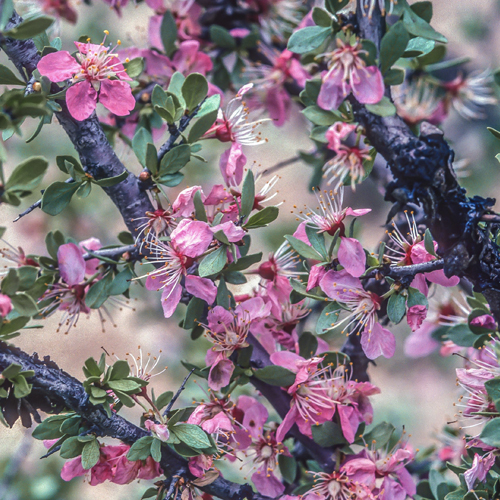Ruth’s Serenity Garden
BACK TO FULL TOUR
Garden Features
Drought Tolerant
Deer Resistant
Drip Irrigation
Lawn Conversion
Lawn-Free Landscaping
Wildlife Habitat
The family home since it was built in 1952, the garden had good bones with beautiful olive trees and hedges that were planted when the house was built.
The garden was reclaimed from a dead lawn that had withered from drought and flooding. The garden needed refurbishing and the owner loved flowers. So we (her son and I with the help and guidance of Katie McLaughlin Design) updated the drainage and drip irrigation, amended the soil, and mapped out a Mediterranean-inspired flower garden for her. Of course, we fell in love with it, too.
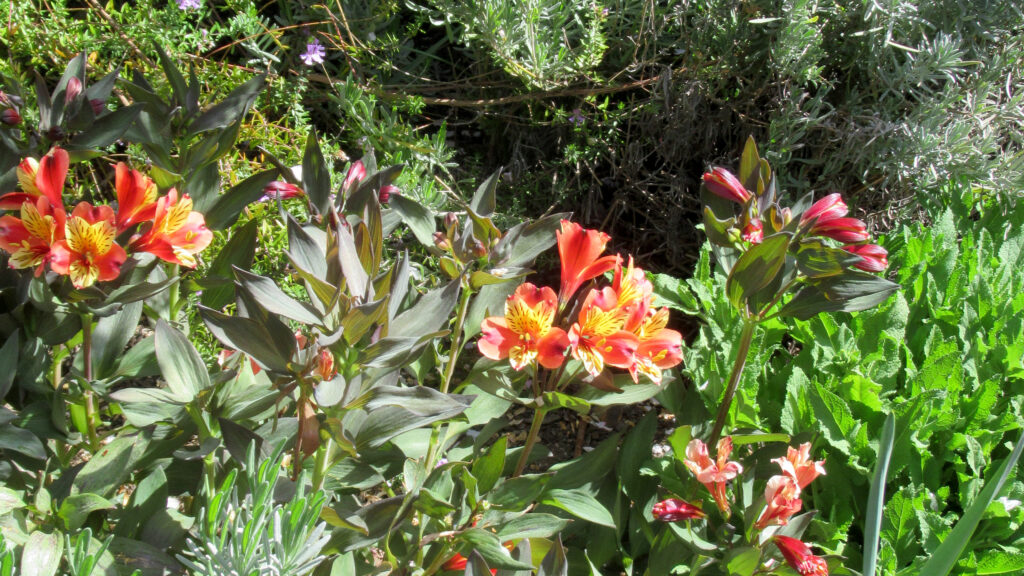
We took it in stages because it was too overwhelming to do it all at once. That also allowed us to make sure we liked the way it grew in, as it takes awhile for a garden to mature. We found the plants that worked, and tried to maintain a continuity of plants and a lavender and white color scheme (with accents of orange to match the front door!)
A Place of Magic & Sanctuary
The bees were there immediately and the hummingbirds! The deer had always enjoyed the safety of the yard, and a mother deer has used the fern corner by the front door as a “Bambi Daycare” for the past few years. We’ve watched the baby feeding right outside the front window under the olive tree! Needless to say, some plants needed to be swapped out because they were too tasty for the deer, but there were plenty of others to plant that they don’t like. They keep the ivy in the hedge well trimmed!
Our niece sat at the table under the olive this last summer having her Zoom meetings for work and the first thing people said was “Where ARE you?” She laughed, and I could feel her grandmother laughing too, and looking down on her garden and family with love.
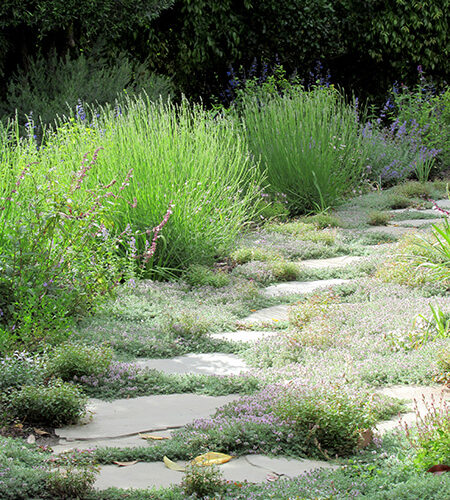
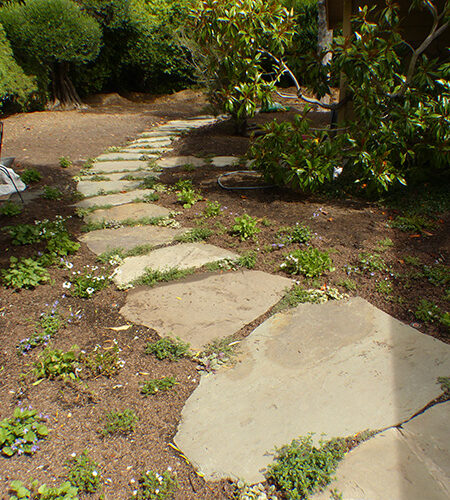
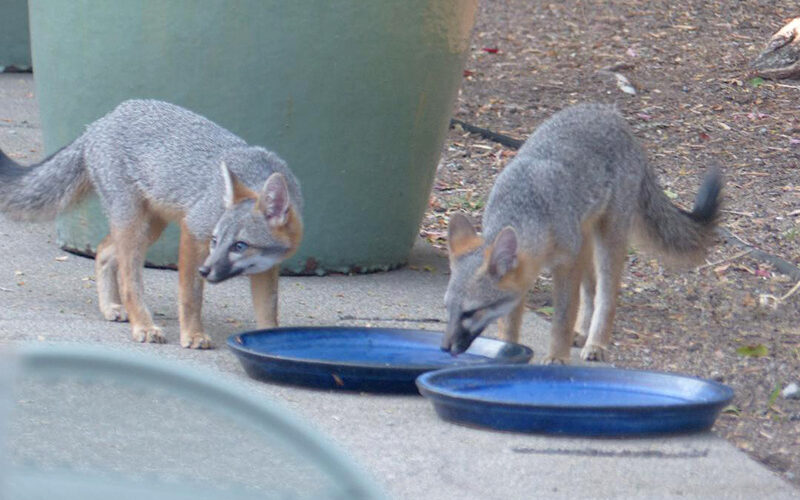
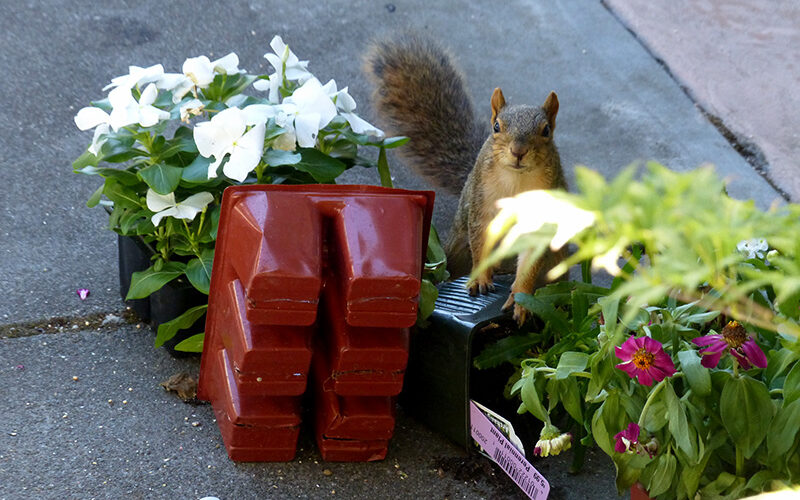
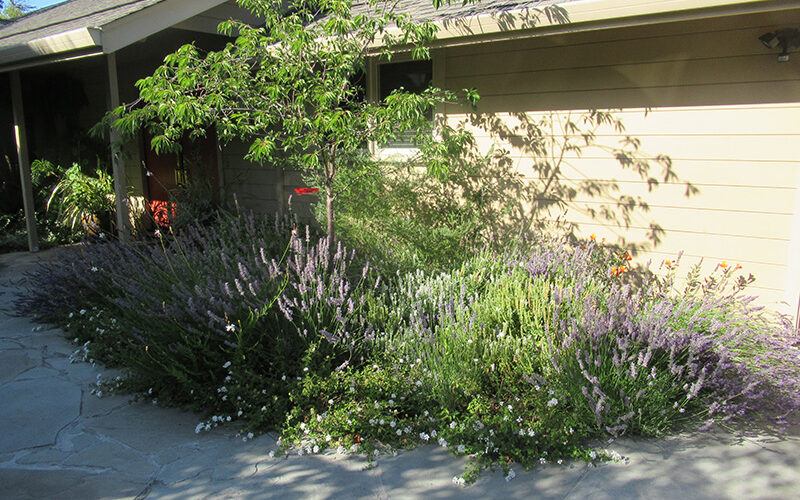
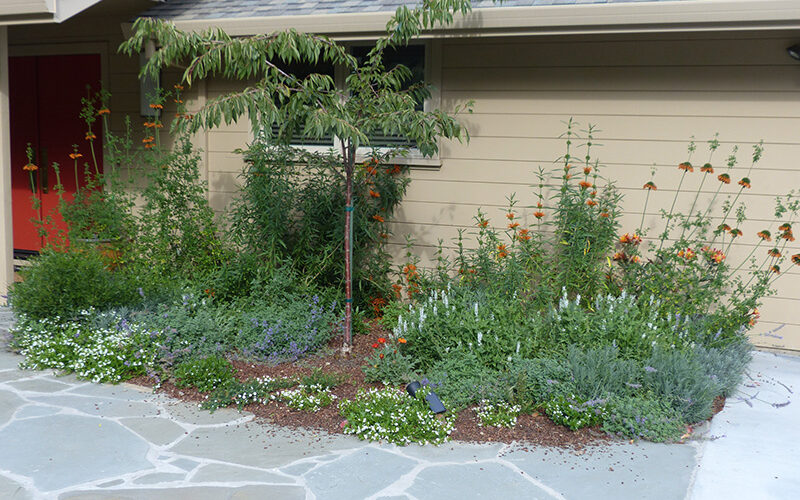
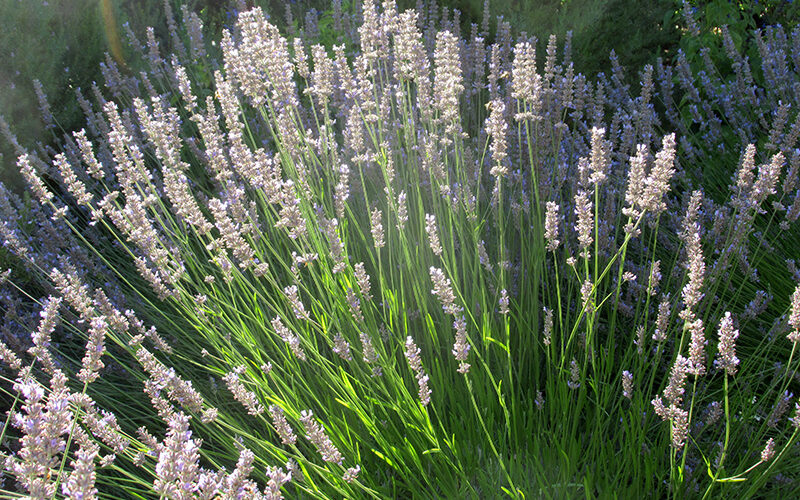
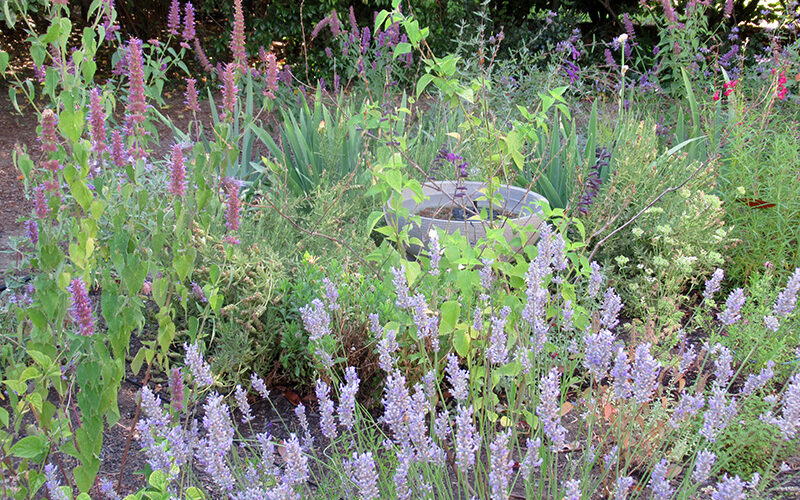
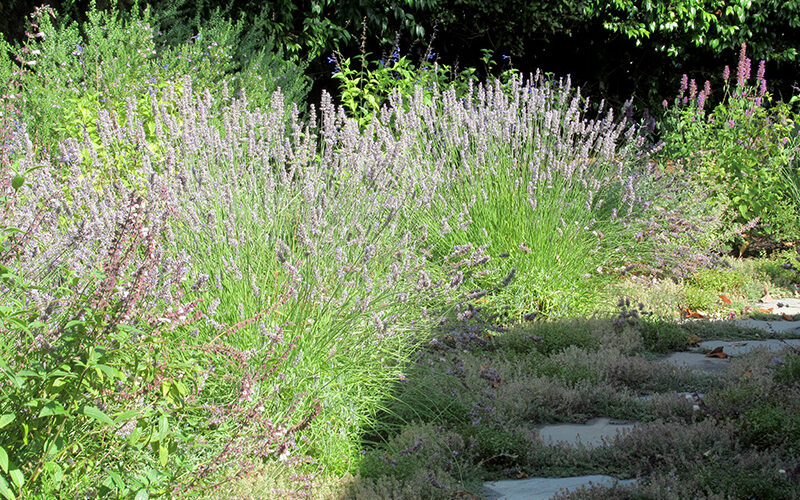
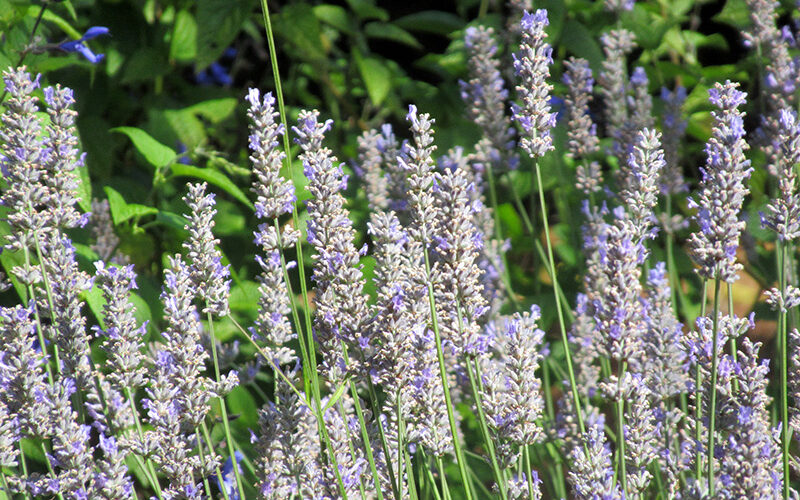
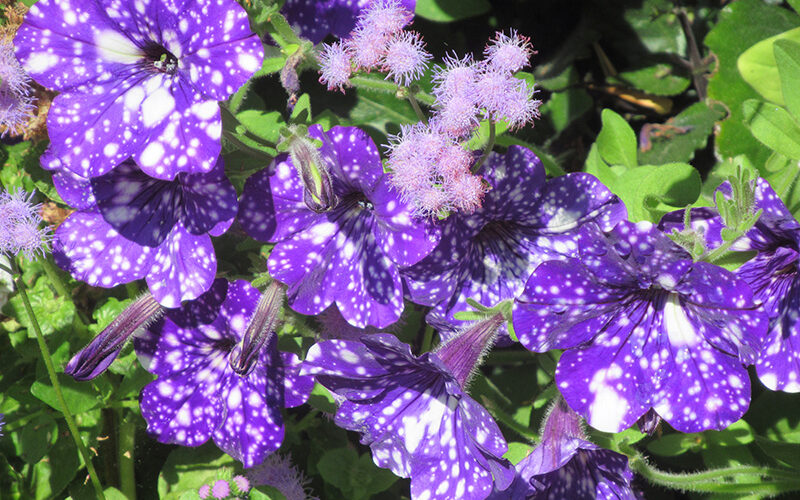
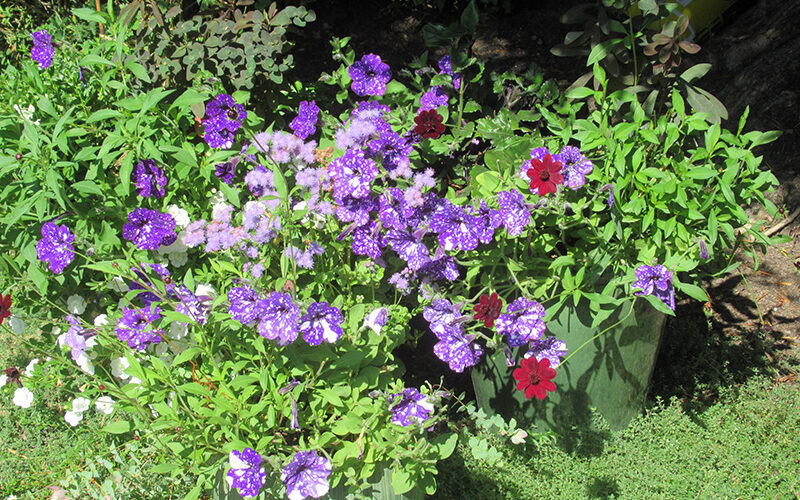
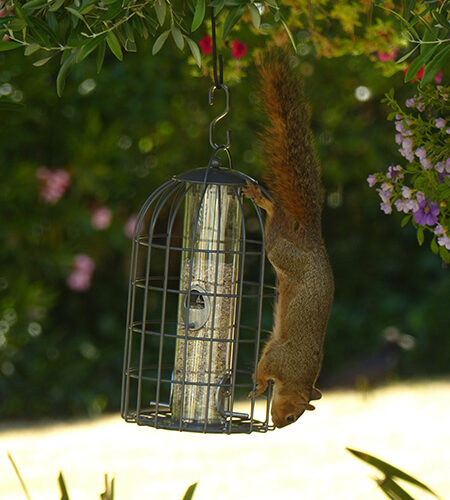
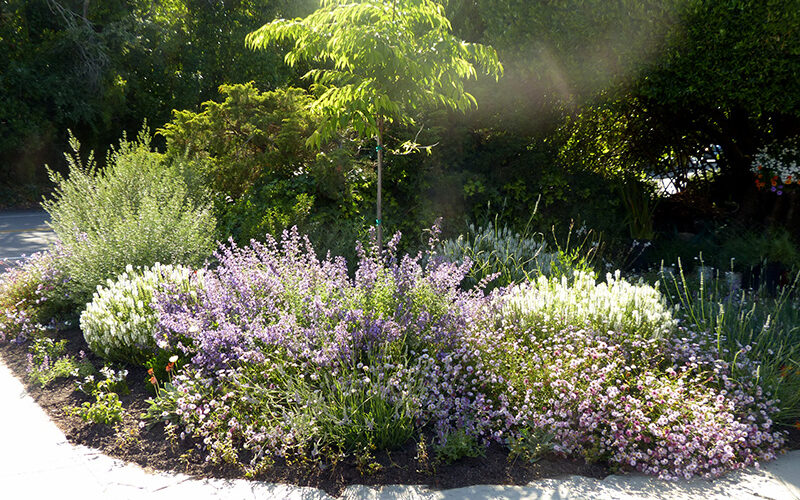
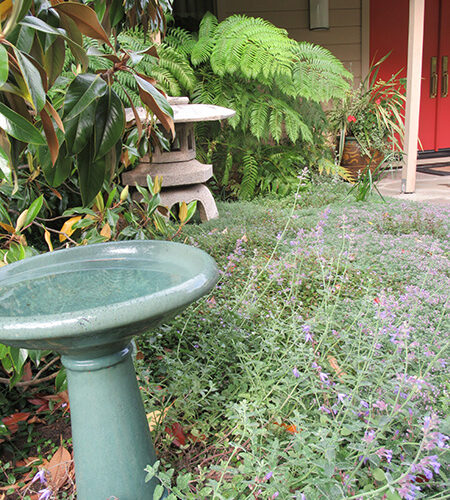
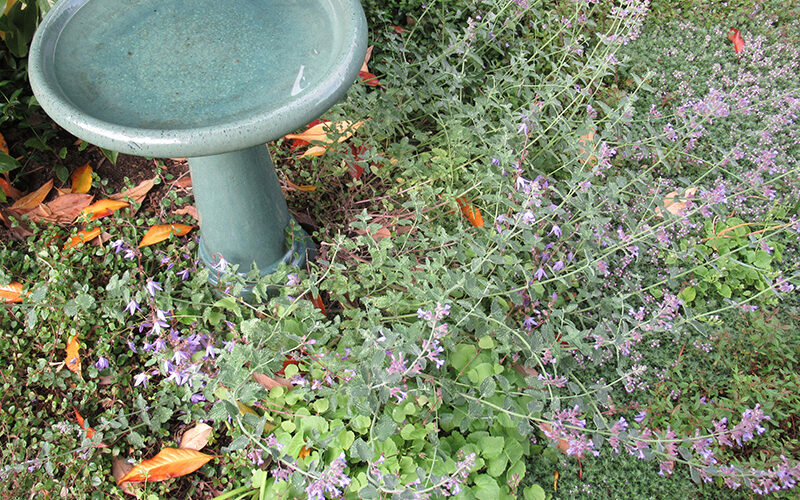
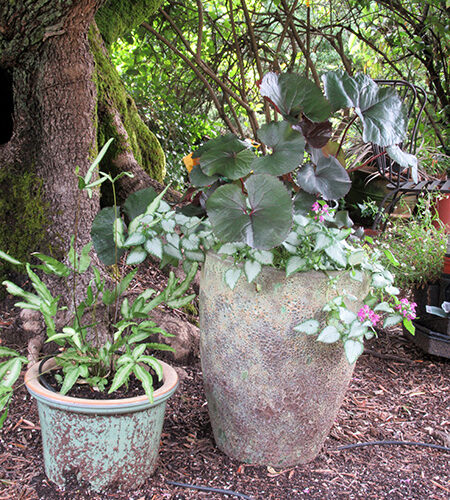
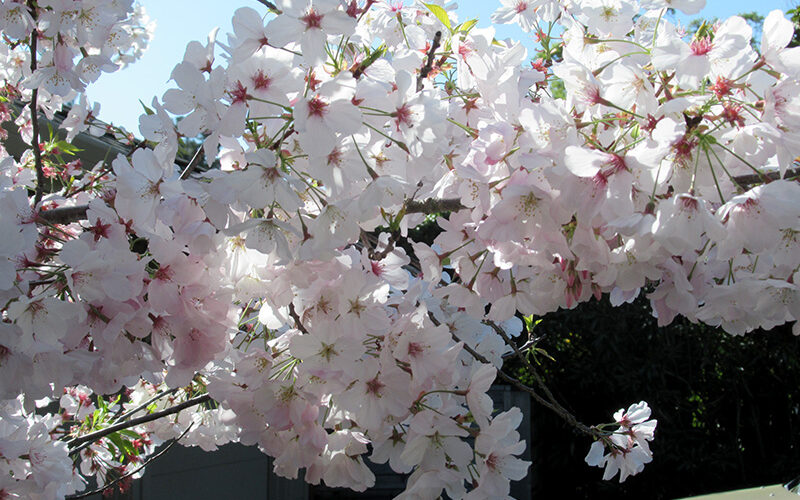
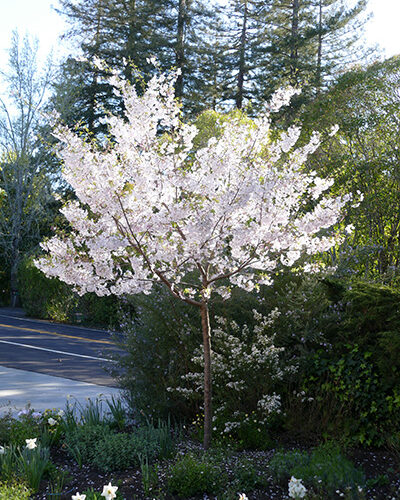
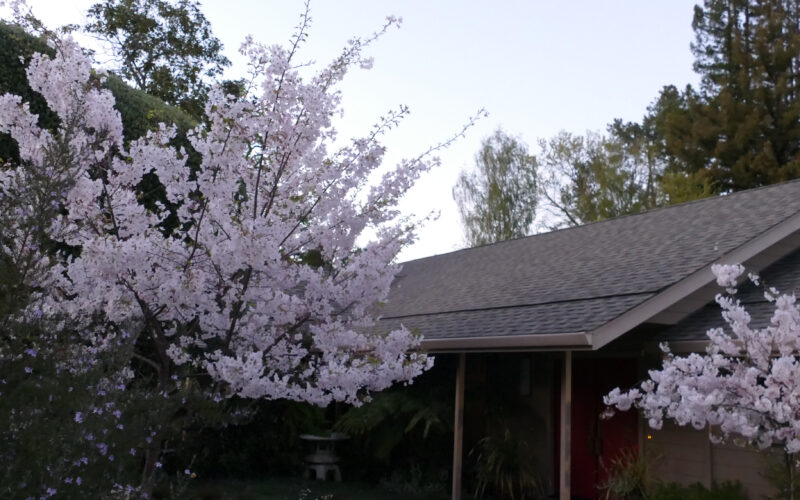
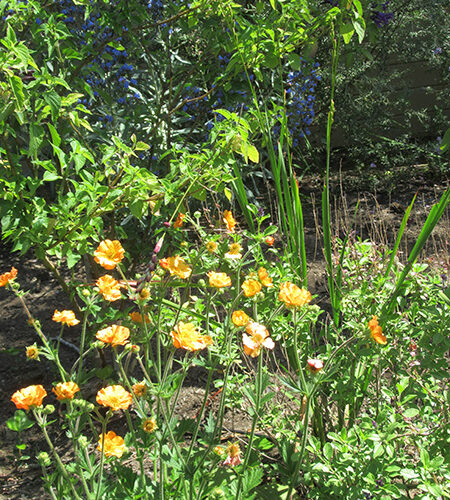
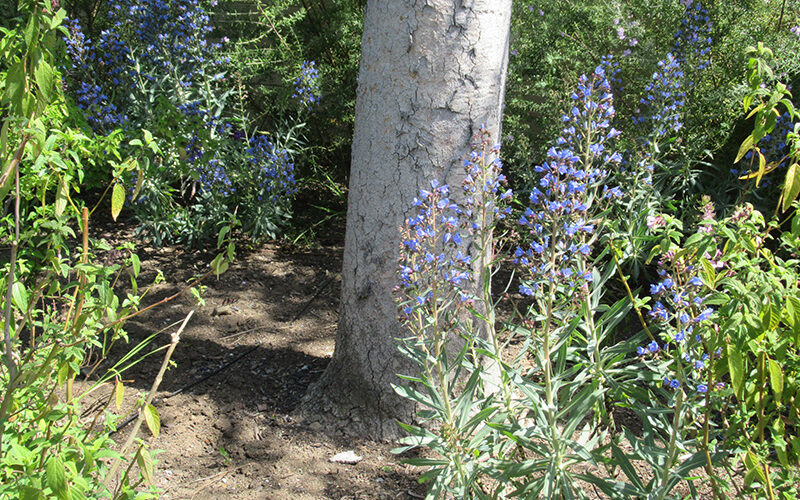
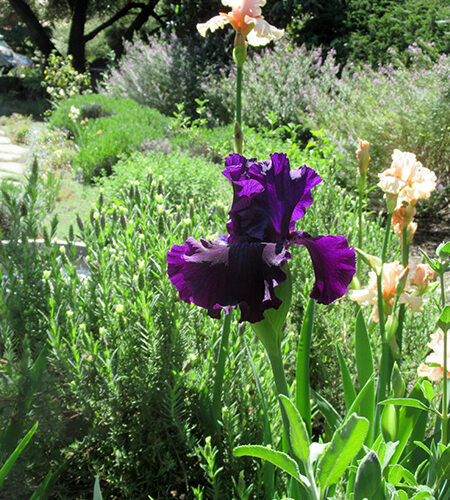
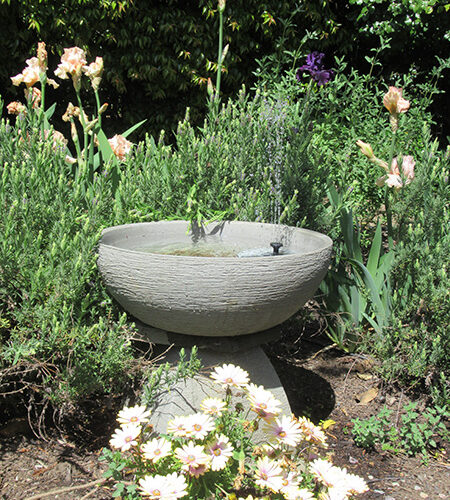
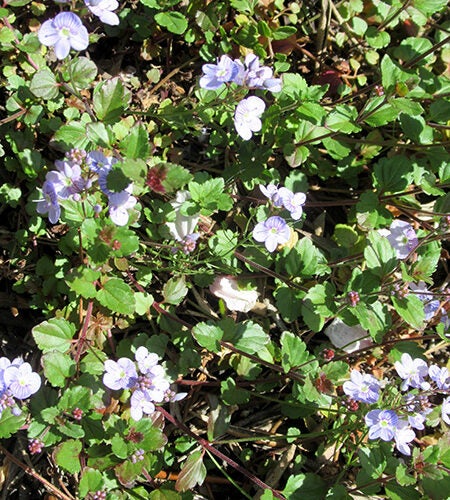
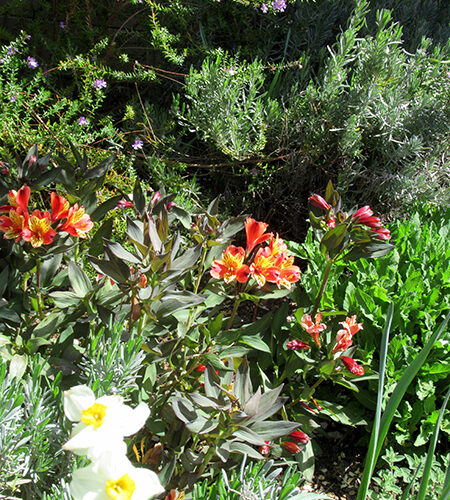
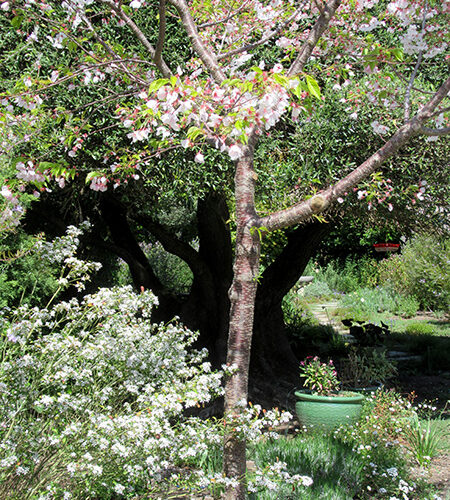
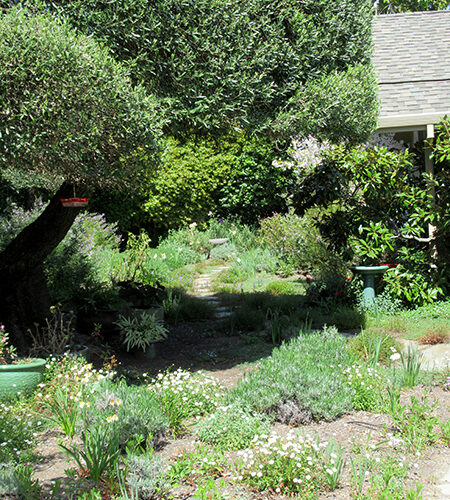
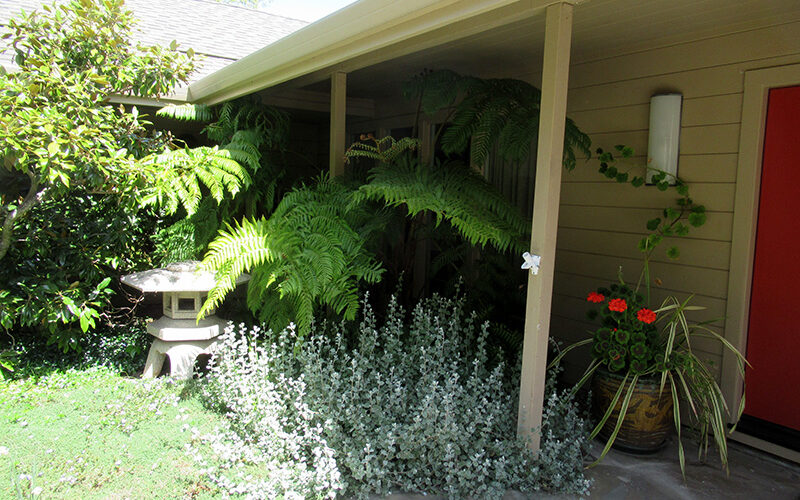
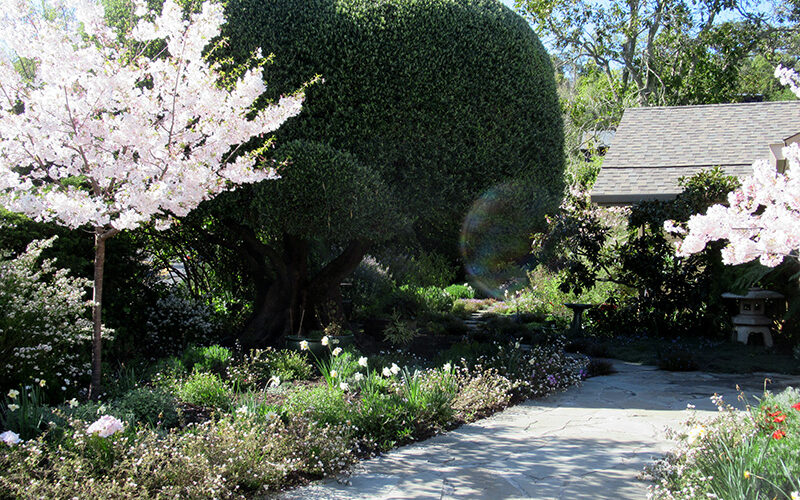
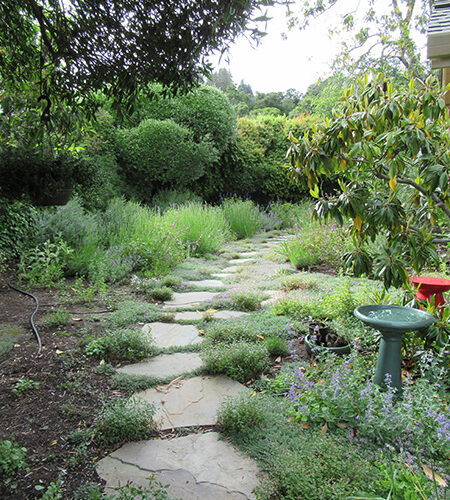
Plants in this Garden
Favorite Plants
Catmint - Multiple Varieties
Rather than “More Cowbell” I say “More Catmint”! I love the beautiful lavender flower spikes (and I have some of the white variety as well, but they don’t seem to grow as large as the lavender) A midseason cutback brings fresh growth and more blooms, and winter cutback sets them up for new growth in the spring. Beautiful low to medium height ground cover (depending on variety) and they look beautiful snuggled up to Santa Barbara Daisy or under wind-shimmering Guara.
Akebono - Prunus x yedoenisis
Although the bloomm time is short, these trees are so glorious that you can’t help but smile when you see them. The day the first blossom opens is a day of celebration!
Salvia - Multiple Varieties
I love so many of the different salvias, although ‘Waverly” is one of my current favorites. It grows fast and big and has these incredible long wands of flowers that are mostly white and lavender but change as they age. They last a LONG time and when the weather stays warm enough, it blooms year round. The only problem then is that I am hesitant to cut it back because it still looks good… I must be strong!
Indian Summer - Alstroemeria
Although I love the orange/yellow blooms, it’s the dark green/bronze foliage which really drew me to this variety. Before I planted them, I set the pots out in the yard and within an hour, the deer had nipped off all the blooms. I went ahead an planted them anyhow, nestled behind lavender and catmint which the deer ignore. They nibble occasionally, but seldom anymore. I did use some homemade deer repellent – egg yolk, baking soda and water – and that seems to work, too.
Waterperry Blue - Veronica
Wonderful groundcover with delicate looking but hardy leaves in dark green that shade to burgundy. Beautiful lavender flowers that bloom in the spring, and more lightly in the summer. I have it interplanted with wooly thyme and most of the time it manages to hold its own with the thyme and floats above it.
Gardening Tips
Always Start With Structural Planning
Hard as it is, doing all your structural planning… irrigation, drainage, soil amendments, pathways… first is really important to giving your plants a good, strong start. Some of the specific plant to plant irrigation can be done after planting, but think about your zones and the main lines that will be feeding the zones before planting. Also watch your sun and shade because sometimes areas that are right next to each other won’t let the same plants flourish due to different sun and temperature issues. Mulch. I don’t really like bark, but will use compost to protect the soil and nourish the plants.
Plants & Color
Think about your color scheme. A riot of different colors is exuberant and beautiful, but sometimes a more restrained palette can be just as exciting. In the front I have mostly with and lavender with pops of orange as contrast. The lavenders shade to a few blues, and a few other inconsistent plants have sneaked in. I love the whites at dusk – they glow! And don’t forget the bulbs! Nothing like their beautiful flowers in early spring.
Plants & Wildlife
Be aware of your wildlife issues. We have deer in the front, so most of the plants I’ve chosen are those that deer don’t like… they do keep the ivy in the hedge trimmed for me, so that works out well! Also deer and squirrels both like tulips, so much as I love them, I’ve learned not to plant them.
A Garden Is Never Done
Lastly, a garden isn’t ever done. Some plants don’t work, some are new discoveries. Some get old and need to be replaced. Find the wonder in it every season and every year!
